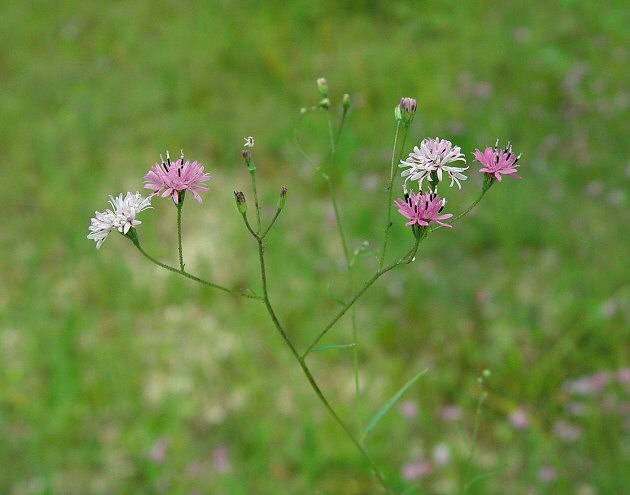Palafoxia callosa (Nutt.) Torr. & A. Gray
Spanish Needles

Native
CC = 5
CW = 5
MOC = 13
© DETenaglia
Palafoxia callosa (Nutt.) Torr. & A. GraySpanish Needles | |
 |
Native CC = 5 CW = 5 MOC = 13 |
© DETenaglia |
|
Family - Asteraceae/Heliantheae Habit - Taprooted annual forb. Stems - Ascending to erect, to 60 cm, branching, with fine longitudinal ridges and grooves, sparsely to densely pubescent with short, stiff, ascending hairs, these replaced abruptly with dark, tack-shaped glands toward the tip.
Leaves - Alternate, sessile or the largest leaves with a short, poorly differentiated petiole. Blades 2-7 cm long, linear, relatively thick (the smaller leaves often nearly as thick as wide), unlobed, the margins entire and on the largest leaves sometimes curled under, tapered at the base, tapered or narrowed to a sharply pointed tip, the surfaces sparsely to densely roughened-pubescent with short, loosely appressed, pustular-based hairs, the bases sometimes conspicuously darkened.
Inflorescence - Open panicles with short, leaflike bracts at the branch points, the branches with moderate to dense, dark, tack-shaped glands, the heads usually solitary and long-stalked at the branch tips.
Heads - Discoid. Involucre 3-6 mm long, 2-5 mm in diameter, conical, the bracts in 2 subequal series. Involucral bracts 9-12, linear, ascending at the tip, the outer surface and margins moderately pubescent with short, white, appressed hairs and/or dark, more or less tack-shaped glands. Receptacle naked, flat, not elongating as the fruits mature.
Flowers - Ray florets absent. Disk florets 5-30, perfect, the corolla 5-6 mm long, purplish pink to nearly white, above the slender, slightly darker purple tube, the tube not expanded at the base or persistent at fruiting, usually sparsely hairy, the minute, abruptly expanded throat and the relatively long, slender lobes mostly glabrous. Style branches with the sterile tip elongate and tapered to a usually sharply pointed tip. Pappus of usually 8 scales, these 0.3-1.0 mm long, oblanceolate to obovate, papery, straw-colored.
Fruits - Achenes 3-5 mm long, narrowly wedge-shaped in outline, strongly 4-angled, the surface otherwise smooth, moderately pubescent with fine, appressed-ascending hairs (these sometimes produced in fascicles of 2 or 3 hairs), purplish black to black, dull or slightly shiny. Flowering - August - October. Habitat - Glades, tops of bluffs on calcareous substrates, streambanks, quarries, roadsides, dry open disturbed areas. Also cultivated. Origin - Native to the U.S. Lookalikes - None when flowering. Other info. - This plant's natural occurrence in Missouri is mostly limited to the far southern counties. Its wider distribution is split between two disjunct populations, one occupying southern Missouri and northern Arkansas, the other mostly confined to Texas. When blooming, the plant is easily identified, as nothing else in the state looks much like it. It is typically found on calcareous soils. In dry years almost all the leaves may be dropped by time of flowering. On gravel bars, however, the plant is frequently robust and maintains its leaves throughout anthesis. Photographs taken along the shores of the Elk River, McDonald County, MO., 9-10-06 (DETenaglia); also at Weldon Spring Conservation Area, St. Charles County, MO, 8-1-2011 and 10-4-2012, and Glade Top Trail National Scenic Byway, Ozark County, MO, 9-23-2017 and 8-15-2023 (SRTurner). |